- Administrator
- Albums and Singles

CONTENTS :
Runzelstirn & Gurgelstock
'Artuad, Aktionkunst, Abreaction and Eb.er' : texts by Alice Kemp, accompanied by new drawings from Rudolf Eb.er, and a detailed 'Aktiongraphy'.
The Broken Flag Story
An extensive indepth interview with Gary Mundy, covering the career of Ramleh, the complete output of his legendary Broken Flag record label, and also featuring new interviews with the artists responsible for those releases, including: Maurizio Bianchi, Unkommuniti, Mauthausen Orchestra, Satori, Controlled Bleeding, Irritant, JFK, Mauro Teho Teardo ( M.T.T.), Con-Dom Sigillum S, Agog, Giancarlo Toniutti, Vortex Campaign, Le Syndicat, Krang and many more, plus unseen artwork and photographs.
No Fun
Festival curator Carlos Giffoni talk about the New York festival's past, present and future, and covers his work with the No Fun Productions label.
The Politics of HNW
The Rita's Sam McKinlay talks about the obsessive nature of the harsh-head. Includes a list of Sam's essential Wall Noise picks spanning the past two decades. An excellent introduction to wall-riding.
30 Years of The Haters
G.X. Jupitter - Larsen provides a personal history, as well as a delineation of his ideas, methods, and tricks accrued over three decades. The inside story from the man who has made entropy his life's work.
Putrefier
An interview with Mark Durgan, covering his twenty years in the UK's wilderness, from Birthbiter's heyday to the present-day. Includes reminiscences from Andy Bolus about their infamous duo project, Olympic Shit Man !
Sewer Election
Sweden's loudest, Dan Johansson talks about his music, ideas, art and running a tape label. Interview by Mikko Aspa of Grunt.
Zone Nord
An album -by- album look at the discography of this retired French noise legend, including brief commentary from Mr Zone Nord himself, Jean-Luc Angles.
Apraxia
An interview with Patrick Barber, the man behind the label. Covers the output of this legendary label who released Blowhole, Prick Decay, Small Cruel Party and others in the early 90's.
Cheapmachines
An interview with London sound-sculpter and all-'round sonic chameleon Phil Julian.
Climax Denial
An interview with this Milwaukee-based Power Electronics lecher, including an album-by-album analysis.
Alien Brains, Storm Bugs and Anti-Messthetics
A study of the non-careers of two early eighties UK outfits that were very much connected. Includes input from some of the key players, plus lots of vintage artwork.
Interchange
A look at this influential UK fanzine from the mid-80s, plus an interview with its creator, John Smith.
Tunnel Canary
G. X. Jupitter - Larsen tells us about his first memories in Vancouver of this volatile bunch.
IDES
An overview of the primary output of this American tape label, and an interview with its owner, Nicole Chambers.
Classic Albums
A regular feature dedicated to both indepth analysis and memories of overlooked but not forgotten gems from yesteryear. Issue #1 features articles on The Lemon Kittens ( We Buy A Hammer For Daddy ), XX Committee ( Network ) and RJF ( Greater Success In Apprehensions & Convictions ). A collection of thoughts and interviews, including an exclusive interview with ex- XX front-man, Scott Foust.
Opinion Columns
A regular feature from a rotating pool of participatory players with the music they ponder. Includes John Olson ( Wolf Eyes ), Andy Ortmann ( Panicsville ), Mikko Aspa ( Grunt ), Steve Underwood ( Harbinger Sound ), Hicham Chadly ( Nashazphone ), Jonas Kellagher ( Segerhuva ), C. Spencer Yeh ( Burning Star Core ) and Mark Wharton ( Idwal Fisher ) amongst others. Covering artists including Masonna, Vomir, and The Black Phelgm, and ranging from Bizarre Uproar all the way to Christian bluegrass music !
Extensive Reviews Section
Covering output from Ahlzagailzeguh, Angel of Decay, Astro, Bizarre Uproar, Blod, BT.HN, C.C.C.C, Cloama, Craniopagus, Jason Crumer, D.D.A.A, Dieter Muh, Thomas Dimuzio, Emaciator, Fckn' Bstrds, Dino Felipe, FFH, Fire in the Head, Carlos Giffoni, Griefer, Haemorrhaging Fetus, Hair Police, Hair Stylistics, Halthan, Russell Haswell, Haters, Hum of the Druid, Idea Fire Company, Illusion of Safety, Irgun Z'wai Leumi, IRM, Jazkamer, Jazzfinger, G.X. Jupitter - Larsen, K2, Zbigniew Karkowski, KILT, Koeff, Graham Lambkin, Lazy Magnet, Mammal, Mania, Daniel Menche, Menstruation Sisters, MNEM, M.O, Mutant Ape, Nerve Net Noise, The New Blockaders, Nihilist Assault Group, nmperign, Oscillating Innards, Prurient, Putrefier, Raglani, Richard Ramirez, Redglaer, The Rita, RJF, Damion Romero, Romance, Secret Abuse, Shift, Sissy Spacek, Spine Scavenger, Sharpwaist, Sickness, Skeletons Out, Howard Stelzer, Sudden Infant, Das Synthetische Mischgewebe, Third Door From The Left, Asmus Tietchens, Treriksroset, Tunnel Canary, Whorebutcher, John Weise, Wilt, Wolf Eyes, XX Committee, C. Spencer Yeh, Jason Zeh and many more.
Back Cover artwork by Richard Rupenus ( The New Blockaders ).
Read More
- Administrator
- Albums and Singles
Eliane Radigue / Pauline Oliveros / Yoshi Wada / Sun Circle
"Attention Patterns"

release date: November 26, 2010
catalog#: IMPREC263
format: 2LP & Booklet
LP1:
Side A - Eliane Radigue: Biogenesis
Side B - Pauline Oliveros: Accordion and Voice
LP2:
Side A - Yoshi Wada: Reed Modulation
Side B - Sun Circle: For Yoshi Wada
Booklet Contents:
Interview with Eliane Radigue by Maxime Guitton
Article by Charles Curtis about his collaboration with Eliane Radigue
Interview/Article with Pauline Oliveros by Che Chen
Sonic Meditations by Pauline Oliveros
Interview with Yoshi Wada by Che Chen
Interview with Sun Circle by Che Chen
Attention Patterns is a 2 LP set featuring new and archival compositions by Pauline Oliveros, Eliane Radigue, Yoshi Wada and Sun Circle, as well as a 48 page booklet containing interviews with the composers and related texts. This release brings together composers with shared affinities for long, slowly unfolding durations and unconventional, harmonic approaches to tuning. Each has contributed a full LP side to the compilation. Edition of 600.
Pauline Oliveros’ “Horse Sings from Cloud (Encore)” is a live performance from 1977 that finds her at her most distilled, performing alone with her justly tuned accordion and voice. Eliane Radigue’s electronic work “Biogenesis,” from 1973, uses her ARP synthesizer and recordings of human heartbeats as its main constituents and is the only piece included on the LPs that has been previously released. Sound artist and instrument builder, Yoshi Wada, appears with “Reed Modulations,” a new work for harmonium, audio generators and bagpipe, made in collaboration with his son, Tashi Wada. Greg Davis and Zach Wallace, better known as Sun Circle, have contributed “For Yoshi Wada,” an ecstatic and fitting tribute with its oddly tuned free reed drones and percussion.
The accompanying booklet includes several of Oliveros’ “Sonic Meditations”—verbal scores that formed the basis for her concept of “Deep Listening”—and interviews with Radigue, Wada, and Sun Circle, as well as an in-depth article on collaborating with Radigue by cellist Charles Curtis. Attention Patterns was compiled by Che Chen (whose other outings as anthologist have included the no longer extant, O Sirhan, O Sirhan, a zine that counted Henry Flynt, Bruce McClure, Sir Richard Bishop, Sublime Frequencies, Jessica Rylan, Animal Collective, Deerhoof, Jorge Boehringer and others among it’s featured) and is a co-release between his new imprint, Black Pollen Press, and Important Records. Two LPs, 48 Page Booklet, Letter-pressed Sleeves.
Read More
- Administrator
- Albums and Singles

San Francisco's Barn Owl have always been underground music chameleons, shifting skillfully between ominous drone, distorted amplifier worship, and all the various places in between, but their first album for Thrill Jockey extends that schizophrenia a bit too far for my taste. Fortunately, while Ancestral Star may not be a completely coherent whole, it at least sounds quite good while it is missing the mark.
Ancestral Star begins with Evan Caminiti and Jon Porras making an oddly melodic foray into doom metal with "Sundown," patiently allowing the sludgy power chords and ringing arpeggios plenty of time to decay and feed back.Unfortunately, "Sundown" is still more notable for being a microcosm of everything that is exasperating about much of this album: a cool motif is presented and explored, but it ends too quickly to amount to much and too bluntly alludes to another artist's work (it is impossible to find a review of this album without a mention of Earth).Ancestral Star sounds like the work of several different pretty good bands, but only a few of them are allowed to stretch out and accomplish something memorable.Two- and three-minute running times are a great idea for catchy, structured songs with strong melodies, but drone-based music takes time to suck the listener in.Barn Owl, more often than not, fail to allow their songs proper time to unfold here.Obviously, their previous albums had some short songs too, but they felt more like thematically linked song suites–Ancestral Star feels much more compartmentalized.Also, I want Barn Owl to sound more uniquely like Barn Owl.
If I didn’t know anything about this duo's previous work, I would probably not be as harsh on them.However, I like From Our Mouths a Perpetual Light quite a bit (Conjurer, too, albeit to a lesser extent) and had rather high expectations for this album which were not met.Of course, there's still certainly a lot to like.For one, Ancestral Star definitely sounds much clearer and more immediate than any of the band's other albums, as one of the perks to signing with Thrill Jockey was getting to record in a professional studio.Also, Barn Owl seems to benefit greatly from the presence of guest musicians like Marielle Jakobsons (Darwinsbitch), The Norman Conquest, and the duo's bandmates from their Portraits side-project.Having other people involved definitely seems to draw out Evan and Jon's best work, particularly Portraits' contribution of bells, singing bowls, and non-traditional percussion to the spooky, ritualistic drone of "Incantation."Unfortunately, "Incantation" only lasts 1:58, which makes me want to scream and shake somebody by their shoulders.
Barn Owl can be an excellent band when they force themselves to hold a mood and allow ideas to fully unfold and progress, such as with the roiling distorted drone of the ten-minute title piece–more of that would've been wonderful.Unfortunately, Cominiti and Porras seem to be intent on expanding their palette rather than getting deeper and more focused.I suspect that practically anyone can find something to like about Ancestral Star, but that few will find it very satisfying.
Samples:
Read More
- Administrator
- Albums and Singles
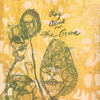
I loved Fire on Fire's The Orchard, so I was pretty disappointed to learn from a recent Michael Gira interview that they had dissolved. My despair turned out to be extremely short-lived though, as I've since discovered that Colleen Kinsella and Caleb Mulkerin have been self-releasing a steady stream of slightly more feral and weird cassettes on their dontrusttheruin imprint ever since. Big Blood sometimes seems a little more sketchlike and rough than Fire on Fire, but the duo's backwoods brilliance remains intact and is generally enhanced by its underproduced and artfully artless nature.
dontrusttheruin/Phase!
The most significant difference between Fire on Fire and Big Blood is that Colleen Kinsella (or her alter-ego Asian Mae) is often the lead vocalist, which may very well be the best thing about the band.She certainly spent some time on the microphone with Fire on Fire, but usually in chorus with others and never quite this conspicuously ragged.Her wild and oft-discordantly harmonized singing is definitely a bit of an acquired taste, but it is one of the most important elements in Big Blood’s transcendence of the freak-folk ghetto: when Colleen is at her most unhinged, she sounds absolutely possessed or ecstatic (as on "The Grove is Hotter Than An Ocean's Oven").Caleb, for his part, is also no slouch in the crazily urgent vocal department.At their best, these two have a way of singing their simple songs with such discordant abandon that they achieve a devastating and primal perfection."In the Shade," in particular, is probably the most stomping, raucous, and pure piece of music that I will hear this year.Then again, there are also times when the duo just simply write and sing some good songs, like the languid and hazy "In The Light of the Moon."
The Grove, however, is not quite a start-to-finish classic–there is definitely some filler and Caleb and Colleen occasionally err on the side of shrillness or delve into overly reverbed slide-guitar blues.Reverb does not particularly suit Big Blood, as their songs don't work as well when stripped of their rawness and intimacy: this duo is great because they sound like hillbillies on the verge of the rapture, not because they churn out flawless folk rock melodies and hot blues licks.However, their rare abstract/experimental moments are also pretty rewarding, such as "Saints & Lepers," which collages a bittersweet banjo motif together with car horns, an ice cream truck, and a marching band in a remarkably effective way.I also enjoyed the Eastern-tinged lysergic weirdness of "Something Brighter Than the News" quite a bit–it was no coincidence that the duo collaborated with Sun City Girls' Alan Bishop back in their Cerberus Shoal days.
Despite the few missteps and less inspired pieces, The Grove is pretty much essential for anyone that can appreciate beauty in its most organic and unpolished form: Kinsella and Mulkerin have tapped into something quite remarkable and vital here.This album was originally released on cassette by the Greek label Phase! in 2008 before being re-released as a CDR on the band's own label, neither of which can be readily tracked down in physical form.Fortunately, however, Big Blood have helpfully posted this and all of their other out-of-print albums on WMFU's Free Music Archive.
Samples:
 
Read More
- Administrator
- Albums and Singles
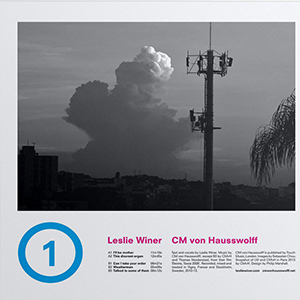 What began apparently as an unplanned collaboration between Leslie Winer's text and spoken word with CM von Hausswolff's electronics in 2011 eventually evolved into this full fledged LP release, also Winer's first all original release in 25 years. The result, (1), is a release that heavily strikes a balance between the two predominant elements, without one ever overshadowing the other. Winer’s idiosyncratic voice and artistically obtuse writing and von Hausswolff's understated use of electronics blend together wonderfully for this record.
What began apparently as an unplanned collaboration between Leslie Winer's text and spoken word with CM von Hausswolff's electronics in 2011 eventually evolved into this full fledged LP release, also Winer's first all original release in 25 years. The result, (1), is a release that heavily strikes a balance between the two predominant elements, without one ever overshadowing the other. Winer’s idiosyncratic voice and artistically obtuse writing and von Hausswolff's understated use of electronics blend together wonderfully for this record.
Leslie Winer's career has been well documented, often focusing on her stint as a fashion model and her association with art iconoclasts such as Burroughs and Basquiat.Only in recent years has there been greater acknowledgement of the obscurity and anonymity of her musical output in the 1980s and 1990s.Reissues and compilations such as the Tapeworm label offshoot Wormhole’s excellent Leslie Winer &c have given her more significant exposure and recognition of her pioneering role in electronic music in the 1990s.That is why (1) is significant for being the first all new album-length material in two and a half decades, and her distinct style has developed fittingly in the passing time.
While Winer and von Hausswolff both get equal representation, the first side of this record and its two lengthy pieces, "I'll Be Mother" and "This Discreet Organ" has more of an emphasis on Winer's text and reading.Von Hausswolff's electronics are rich, but minimal in their structure."I'll Be Mother" especially has von Hauswolff's electronics hovering further in the background, creating a subtle underscoring while the focus is on Winer's stream of consciousness texts.Her intentionally detached, deadpan voice appears again the focus of "This Discreet Organ", but here the electronics come across with a bit more force and variation.
The duo trades off duties of primary focus on "Can I Take Your Order," from Winer's filtered delivery to von Hauswolff's swelling electronics throughout its duration, and the whole piece having a more varied and diverse feel."Weatherman" also presents the voice as more treated with effects, as the electronics pulsate in an otherworldly space to make it a standout on the album."Talked to Some of Them," also credited to artist and filmmaker Thomas Nordanstad, reworks recordings from "I'll Be Mother" into a different, more effected performance that was originally part of the film Electra, Texas 2008.The rising and falling electronic sound and an emphasis on the hazy, narcotic atmosphere come together excellently.
Spoken word performances are usually hit and miss with me, largely because I feel too often the text overshadows the musical portion of it, and it is usually the musical elements of a recording I come back to most often.Leslie Winer and CM von Hausswolff have done an excellent job at balancing these two worlds, and so it made it easy to listen to more than once, sometimes focusing on the musical components, other times letting my mind lock into the complex textual elements.
samples:
 
Read More
- Administrator
- Albums and Singles
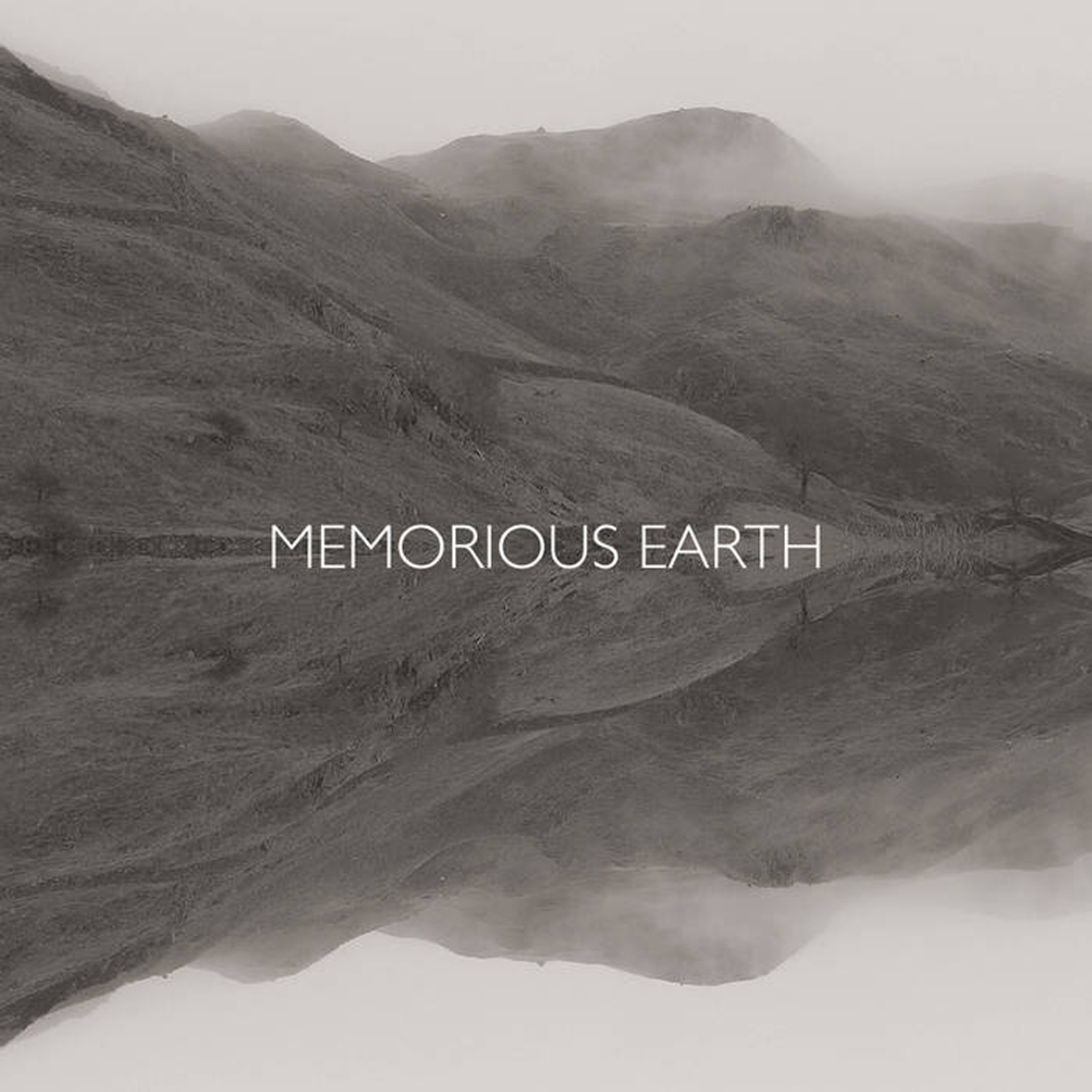
Now thankfully available digitally (lavish packaging means lavish overseas postage rates), Memorious Earth is the film soundtrack from Richard Skelton and Autumn Richardson’s ambitious recent retrospective that involved a gallery show, a book of writings and photography, and (of course) a film.  While I have not seen the film (it was only included in the extremely limited "archive box"), the album works just fine without its intended visual component, doubling down on the long-form aesthetic of predecessor Diagrams for the Summoning of Wolves for a single 44-minute epic with considerably more success.  In fact, this is exactly the Richard Skelton album that the world needed: there are already plenty of wonderful distillations of his prickly, undulating brilliance around, but now there is a mesmerizing and slow-burning expansion as well.
For better or worse, one of the notable (and inherent) side-effects of Autumn and Richard's earthy aesthetic is that they increasingly seem to operate on a time-scale that is considerably more geologic than human.  In the short-term sense, that means that Memorious Earth's "Now This Terrestrial Sea" takes its time to get rolling, unfolding as a subdued and gently pulsing rumble for almost eight minutes before it begins to truly blossom.  In a long-term sense, however, such an approach offers a deliciously simmering build-up of tension for those with enough patience to appreciate it.  In fact, "Terrestrial Sea" feels a lot like the musical equivalent of time-lapse photography, as there is not much transformation at all from instant to instant, but the cumulative effect is ultimately quite powerful.  It also feels a lot like extreme slow-motion footage of a catastrophic act of God like a volcano, earthquake, or tidal wave: an unstoppable creeping force that slowly consumes everything in its path as it swells in power and violence.  A similarly apt metaphor would be a solar eclipse: a dark ominous mass gradually snuffing out all the light from the sky.
As hyperbolic as all that sounds, "Terrestrial Sea" more than backs up any comparisons to overwhelming elemental forces, as it is a masterpiece of engulfing, slow-building, and crushing density that demands to be played at window-rattling volume.  In fact, that is the only real way to fully appreciate Memorious Earth’s immense majesty, as what it offers is minimalism at its most apocalyptic and little else.  There is no real harmonic, melodic, or rhythmic development to be found and there does not need to be–such frivolous fripperies would only be distracting and out of place here.  Memorious Earth is nothing but vibrant texture and earth-shaking primal force executed perfectly: there is a pulse and a rumble and they just relentlessly grow in volume and fury for the better part of an hour.  Well, at least in spirit–there are some timely oases of comparative calm throughout the album, but they only serve to set the stage for future resurgences.  Without those periodic breaks in tension, Memorious Earth's power would gradually become numbing.  With them, however, it continues to make a fresh impact again and again with each new plateau of heaviness.
Aside from being a start-to-finish stellar album, Memorious Earth is also curiously significant for lacking many of the overt traits that previously distinguished the duo's work.  For example, Autumn Richardson’s vocals are nowhere to be found at all.  Also, Richard’s characteristic spray of sharp harmonics is absent (or buried) as well, as is any audible scraping or creaking from his various bowed instruments.  Normally, such a suppression of an artist’s defining characteristics would be recipe for disaster (or at least disappointment), but such a vanishing act seems weirdly appropriate and inspired in this context–it is only natural that such a massive and roiling juggernaut would subsume its creators.  The trick, however, is that only *AR's superficial traits have been erased: their deep understanding of timing, texture, and dynamics has never been more masterfully focused.  This is a stone-cold tour de force.
- Now This Terrestrial Sea (excerpt one)
- Now This Terrestrial Sea (excerpt two)
- Now This Terrestrial Sea (excerpt three)
 
Read More
- Administrator
- Albums and Singles
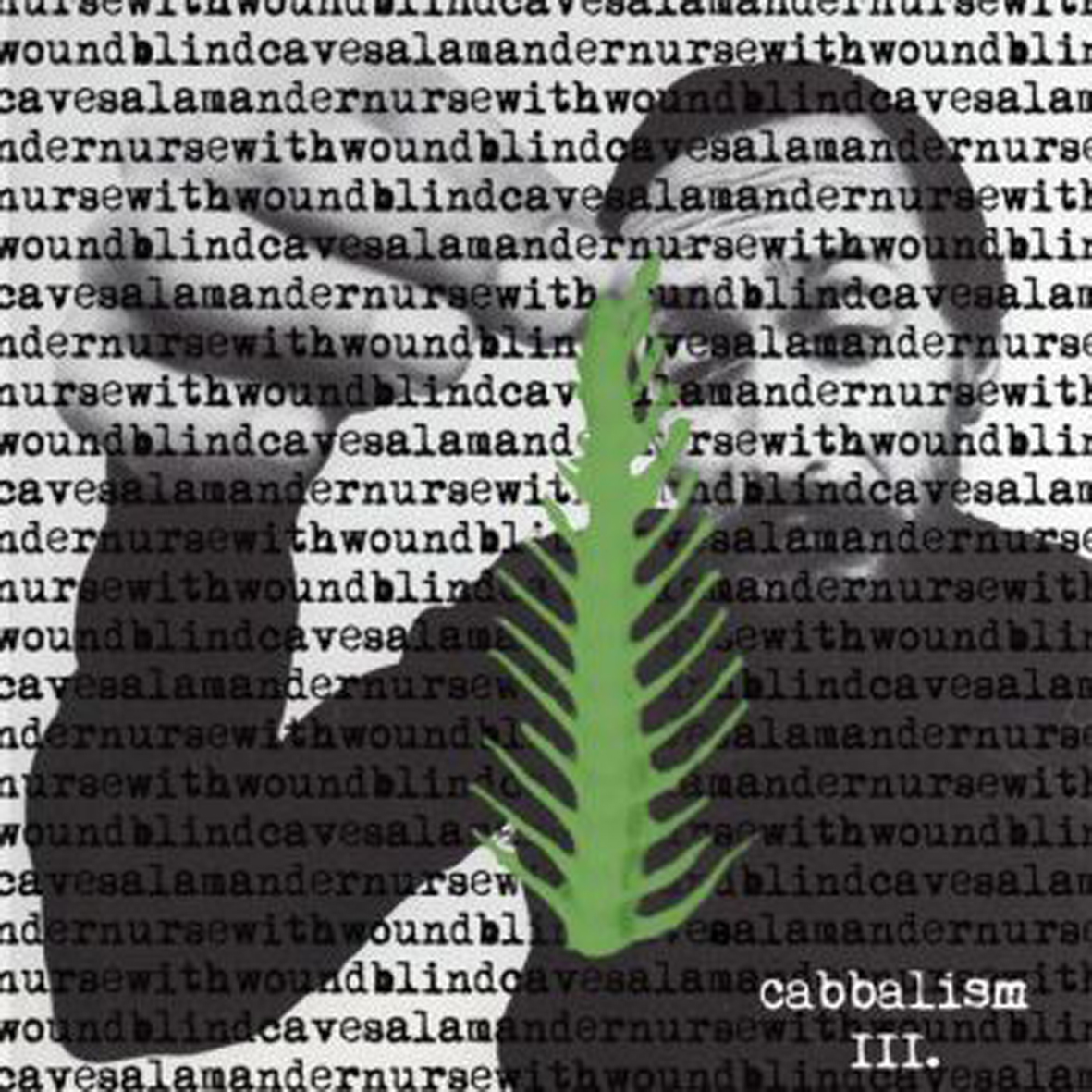 This is an expanded reissue of a 2012 album that documented two 2009 live performances in which Nurse With Wound, Julia Kent, and Italy’s Blind Cave Salamander teamed up for an improbable variation/reinterpretation of NWW’s classic Soliloquy for Lilith album (an album that was largely the product of an unexpected and unrepeatable electromagnetic phenomenon).  The expansion in question is a third performance in an identical vein to the previous two.  Notably, however, that vein is not all that much like Soliloquy, which makes Cabbalism something separate and singular rather than just a mere live album.  In fact, it does not even sound much like NWW at all, which I suppose makes this a very successful collaboration.  While the third piece is not nearly divergent enough to warrant repurchasing the album for anyone who pounced on Cabbalism this first time around, the reissue is a very enticing package for those of us who unwisely slept on it.
This is an expanded reissue of a 2012 album that documented two 2009 live performances in which Nurse With Wound, Julia Kent, and Italy’s Blind Cave Salamander teamed up for an improbable variation/reinterpretation of NWW’s classic Soliloquy for Lilith album (an album that was largely the product of an unexpected and unrepeatable electromagnetic phenomenon).  The expansion in question is a third performance in an identical vein to the previous two.  Notably, however, that vein is not all that much like Soliloquy, which makes Cabbalism something separate and singular rather than just a mere live album.  In fact, it does not even sound much like NWW at all, which I suppose makes this a very successful collaboration.  While the third piece is not nearly divergent enough to warrant repurchasing the album for anyone who pounced on Cabbalism this first time around, the reissue is a very enticing package for those of us who unwisely slept on it.
It is easy to see why this project appealed to Steven Stapleton, as it is a fundamentally absurd and open-ended one.  Given that the original Soliloquy was largely the inhuman work of a feedback loop of effects pedals and a helpful magnetic field, anything improvised by a group of musicians armed with guitars, violins, cellos, and a singing saw is inherently destined to be unrecognizably different right from the start.  The sole apparent common ground between Cabbalism and Soliloquy is merely that there are some electronics making unpredictable sounds and that there is a similarly droning and hallucinatory aesthetic.  In fact, the first time that I ever heard Cabbalism (without knowing the backstory), I immediately assumed that Stapleton and Colin Potter were just doing some live processing on a performance by an ethno-ambient drone ensemble.  That is not the case at all, but if Stapleton sincerely set out to replicate the stark and alien beauty of Soliloquy, he was quickly buried under too many layers of other stuff to succeed.
In general, all three performances are built upon a low drone that is increasingly embellished with buzzing crests of electronics, swells of feedback, and ominous metallic washes that sound like processed cymbals.  Unexpectedly, it is Julia Kent (apparently a member of Blind Cave Salamander at the time) who emerges as the most prominent and distinctive performer, as her mournful cello melodies give each its piece its own shape and feel.  As a result, "Cabbalism I" is the strongest piece, as Kent opens up with a darkly melancholy melody and is given plenty of space to make her impact.  In "Cabbalism II," she steps forward with an appealingly see-sawing motif, but she rarely lingers in the foreground at all in the new "Cabbalism III."  Notably, however, the third version sounds a lot like the first version might after being sucked through a black hole or something: there are snatches of familiar melody, but they are considerably more subsumed by the simmering electronic chaos around them. That said, while Kent provides much of the structure and most of the album's "hooks," it is Paul Beauchamp's singing saw that seems to be the ensemble's apparent secret weapon, as the real pay-off for each piece is a passage where Cabbalism unexpectedly blossoms into an understated rapture of lilting, fluttering, and swooping notes.  It's a lot like a fireworks display with no explosions at all, but an unexpectedly slow and beautiful descent of burning embers.
If Cabbalism has any significant flaws, they are highly subjective and mostly related to what it is not.  For example, it is not Soliloquy for Lilith Redux nor does it particularly sound recognizably like anything that might have sprung from the mind of Steven Stapleton.  Another potential issue is that the new inclusion of "Cabbalism III" does not add much to the album other than increased duration: it is now three very similar variations on a theme rather than just two.  That should not come as a surprise though: if "Cabbalism III" were a masterpiece, Potter and Stapleton would obviously not have omitted it from the original release.  That said, however, the added duration is actually quite welcome, as Cabbalism was already a deep and immersive experience and now it is even deeper and more immersive.  As far as I am concerned, much more of a good thing is almost as satisfying as a better album might have been.  More importantly, when stripped of any NWW-related expectations and taken solely on its own terms, Cabbalism is quite an excellent drone album: it may not nearly be as gleefully deranged and surrealistic as any of Stapleton's other recent work, but the consolation prize is that it is still a hell of a lot more complex, unconventional, and unpredictable than most similar fare.
 
Read More
- Creaig Dunton
- Albums and Singles
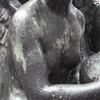 Clocking in at a meager 20 minutes, these two tracks mix ambience, noise, and traditional instrumentation into a fog that is sparse, yet complex, and has moments of arid beauty as well as dark, sinister passages. More than a few times this young composer reminded me of some of Organum's best moments, which is a massive compliment.
Clocking in at a meager 20 minutes, these two tracks mix ambience, noise, and traditional instrumentation into a fog that is sparse, yet complex, and has moments of arid beauty as well as dark, sinister passages. More than a few times this young composer reminded me of some of Organum's best moments, which is a massive compliment.
"Dissonant Distances" is a slow build into glassy feedback, with an organic ambience under it that succumbs to harsher tones throughout.It's a complex piece that is restrained and pensive throughout, with a darker turn towards the end.It is this piece especially that shows Dunn’s ability to create sounds that move and develop, but within a structured framework to never feel aimless or random.
"Senium III" begins with church-like bell tones, heavily reverberated and echoed into a sparse, but regal sound.The tone and drama that’s conveyed in this really simple composition really reminded me of Jackman’s recent work, specifically the "holy" trinity of Sanctus, Omega and Amen from recent years.The spiritual quality of these tones is very similar, though here there is more development and variation than on those Organum discs.
Kyle Bobby Dunn is a relatively new name in this scene, but already he shows a strong ear for drama and tension within the world of sound.This EP is a great example and he brings along the cold, overcast terrain of his childhood home with it.There’s drama, mystery, tension, and beauty contained herein, which is pretty impressive considering the small scale of this release.
Read More
- Administrator
- Albums and Singles

While Jenks Miller has his hand in a multitude of Chapel Hill bands, his Tony Iommi meets Tony Conrad metal project Horseback has received the most notoriety as of late. However, on this collaboration with the relatively new drone composer Nicholas Szczpanik, there isn't a riff to be found. Instead the two weave together seamlessly expansive ranges of tonal and textural sound into an album that travels through the darkness and into the light multiple times.
Both artists are often labeled "drone" by critics and writers, with Miller putting his own spin on Sunn O)))'s monolithic riffing, and Szczpanik creating expansive, sparse tonal works that aren't afraid to drift into dissonant noise territory.I would argue that this description is too simplistic based upon this album, however.While certain tones and motifs are allowed to stretch out for long periods, such as the tinnitus-inducing frequencies of "A Private Life," or repetitive church melodies of "White Light," there is always a large amount of movement and variation going on around them, such as the digital music box melodies and radio static crunch of the former.
"White Light" goes even further, shaping raw noises into icy winds, coupled with a slow and simple ritualistic drum beat.The sound eventually explodes into full on walls of harsh noise, but paired with a symphonic wall of synths to wonderful effect.This combination of beautiful tone with ugly noise also defines the closer, "Cranberry Sauce," which is initially soaring, high pitched shimmering textures and light, warm drones, but eventually met with an undercurrent of static that soon rises to an equal volume level, putting the pastoral ambient tones with violent wall noise, almost symbolizing light versus dark, or good versus evil.For most of the piece the two stay on equal footing, but a blast of noise dominates the last few seconds before the album’s abrupt ending.So, dark triumphs over light at the last second…that's rather metal.
Other pieces are less dramatic and more pensive, meditative studies upon sound."Sin Killers" is all submerged screeches and squelches over hollow, echoed rattles and buzzing drones with dark organ swells."Ossuary Dub" is more glacial rather than dark, with cold electronic walls of sound matched with echoed and processed terse percussion.I'm assuming the title is a nod to one of the remixes on Painkiller's Execution Ground set from the mid '90s, and while they're attempting little of the grindcore blast jazz from that album, the music feels like it could definitely be inspired by the deconstructed, icy remix the track is named for.
With as much as I write about albums in the genre, "drone" and "minimalist" (in the modern sense) is really past the point of saturation.With so many projects, especially from the metal side of the world trying to carve out their place, it becomes hard to separate the cream from the crap.This definitely rises to the top, however, because of both its actual sonic components and its powerfully effective composition.The minimalism is more in the classic sense, and the structures of each piece avoid the pitfall of simply repeating the same sound for long periods.American Gothic is a brilliant collaboration and worthy of being hoisted into the top experimental albums of the year, easily.
samples:
 
 
Read More
- Administrator
- Albums and Singles
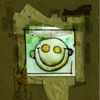 Now somewhere in the realms of prog/psych/metal/whatever, at one point Norway's Motopsycho were among the crop of potential "next big things" in a post-Nirvana world, creating music that wasn't far removed from the "alternative" scene that would soon be exploited and plundered to give us the likes of Nickleback and the existence of "nu-metal". Even then, however, there was a streak of weirdness that the band would later tap into more deeply, and on the double CD/triple LP Timothy's Monster, the band perfectly balanced catchy rock with bizarre outbursts. Long a cult favorite, this set reproduces the original album in its entirety (the US and UK versions edited the longer pieces to make it fit on a single disc), with an unreleased "first draft" of the album, and a disc full of outtakes/B-sides. It’s a lot to digest, but even for the casual fan, it's a strong set.
Now somewhere in the realms of prog/psych/metal/whatever, at one point Norway's Motopsycho were among the crop of potential "next big things" in a post-Nirvana world, creating music that wasn't far removed from the "alternative" scene that would soon be exploited and plundered to give us the likes of Nickleback and the existence of "nu-metal". Even then, however, there was a streak of weirdness that the band would later tap into more deeply, and on the double CD/triple LP Timothy's Monster, the band perfectly balanced catchy rock with bizarre outbursts. Long a cult favorite, this set reproduces the original album in its entirety (the US and UK versions edited the longer pieces to make it fit on a single disc), with an unreleased "first draft" of the album, and a disc full of outtakes/B-sides. It’s a lot to digest, but even for the casual fan, it's a strong set.
It's hard to not feel a bit of nostalgia when listening to this album, even though I wasn’t aware of it when it first appeared.I was a freshman in high school when it initially came out, and while I was absorbed into the world of second generation industrial music, I was still hearing and appreciating a lot of the "alternative rock" that defined 120 Minutes and other video shows.Timothy's Monster has a lot of these sounds…the jangly guitars, the overdriven bass, sharp drum tunings, etc., but never does it feel dated or derivative, there are simply too many brilliantly weird moments to prevent that. For example:on a quick listen "A Shrug & A Fistful" sounds like conventional alternative pop, but upon closer inspection, the harsh white noise blasts, guitar abuse and banjo parts clearly keep it strange."Kill Some Day" is like the surging, anthem-like chorus of a song held in statis for the full duration:it mostly keeps the heavy, chugging sound for its full seven minute duration."On My Pillow" even channels some of Pavement's slower, lurching songs without the intentional amateur sound and with the addition of some Theremin.
The longer tracks bring this out even more:the ten minute "Giftland" opens with abstract noise, then slowly becomes shaped into a dramatic, developing track with dual drummers, each one hard panned into a separate channel and later includes cinematic string flourishes, all building to a loud crescendo and then quietly closing out."The Wheel" is mostly propelled by an organ/bass sound that also explodes dramatically, but for the latter portion is subjected to heavy effects and processing to make the sound even more unconventional than it started with.
The unreleased "first edition" of the album that constitutes disc three feels like a dry run or demo version of what was finally released, and includes some tracks that were left as B-sides or never heard from again.For the material that appeared on the final release, there aren't significant differences:"Leave It Like That" has a thinner sound and a little less drama overall, and "A Shrug & A Fistful" has some hard panned guitar and a stop/start structure that wasn’t as prominent in the final version.The tracks that never were heard from again make sense being excised in the end though, "On The Toad Again" is a plodding screamfest that marries old school Sabbath to '90s grunge metal, but actually works in a fun sort of way, but would be completely out of place on the album.The same for the appropriately titled "Very 90's, Very Aware," which also leans more into rapid fire drums and grungy bass, its simplicity is its weakest spot and makes it far less engaging than most of the other material here.
The final disc comprises b-sides and outtakes from the album, and it is what would be expected, consisting of odd experiments that sometimes work, and sometimes don’t.The metal tendencies are on display once again with "Seethe," but with the tight, rudimentary rhythmic guitar parts it resembles Psalm 69-era Ministry, which I personally think is a good thing."Jr" is at its core a song that would have been appropriate on the album, but is heavily muffled and filtered to the point it sounds like it’s playing on a shitty boom box next door."Mr. Butterclut Goes To The Fair, Meets The Viscount, And That's Where We Leave Him At The End of This Episode…" has a title that's longer than the song itself, but is an odd piece of soundtracky material that could be the backing for a radio play that is bizarrely brilliant.The closing "Sonnyboy Gaybar" also is a goofy gem, written five minutes before it was recorded live.It's a Norwegian take on American country/bluegrass, and is as strange as one would expect.
At first I was suspicious how this set would appeal to the "average" listener.Often these deluxe expanded reissues are packed with subtle remixes or demos that are interesting the first time they’re heard, and then ignored afterward.This is an exception to that rule, because even people who are hearing this album for the first time can appreciate the supplemental material.A few of the tracks on disc three are hard to differentiate from their final versions, but those are few and far between.There's a lot of material to take in here, but it’s almost all compelling, and even those occasional missteps in the bonus material aren’t nearly as bad as other band’s unheard stuff.It might be a bit much to play in one sitting, but none of these discs are stinkers.
samples:
 
Read More
- Duncan Edwards
- Albums and Singles
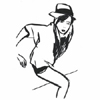 This hypnotic listening experience is as pleasantly soporific and gently gritty as if Mazzy Star had been produced by Alex Chilton.
This hypnotic listening experience is as pleasantly soporific and gently gritty as if Mazzy Star had been produced by Alex Chilton.
 
The ramshackle-sounding "Pure" probably highlights the group's sonic ambition as well as any song here, with Clark Griffin's languid, sparkling, guitar lines and the haunting, if slightly incomprehensible, voice of Wednesday Knudsen nicely separated from a percussive strum of acoustic guitar resembling a "treated" tambourine.
Griffin wisely has a contrasting abrasive tone on other tracks and the duo's sound is augmented here and there with drum machine, flute, and use of echo. Knudsen sings in French on two or three songs including the spacious cover of Serge Gainsbourg's "Laisse Tomber les Filles" which builds into a weird chant with an instrumental break of squeaks somewhat similar to how it might sound if a box of activated Buddha Machines were attacked by sleepy kittens. I'm not sure if Pigeons can pull this gorgeous, urban- folk mysticism off in concert but they are currently playing dates on both US coasts, and down into Florida, Louisiana and Texas.
Read More


